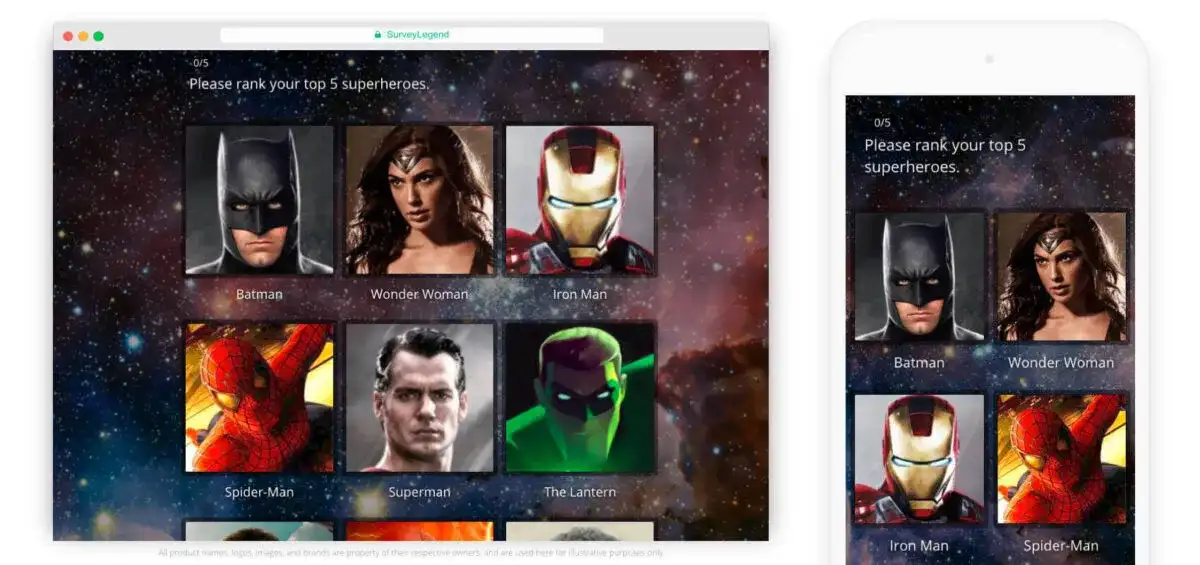Taking a shortcut is all about finding more efficient or faster ways of doing something without sacrificing quality or integrity. On the other hand, cutting corners means skipping steps that can undermine quality or integrity. When it comes to creating surveys, then, it’s acceptable to take shortcuts. For example, using a proven pre-existing survey template to save time and money. However, you should never cut corners, like using biased questions in order to achieve a desired outcome. In this blog, we’ll look at the ways that cutting corners can damage your survey in the long-run.
Create Your FREE Survey, Poll, or Questionnaire Now!
Why Do Some People Cut Corners When Creating Surveys?
To begin, it’s important to understand why a company or researcher would consider cutting corners, and potentially damaging results, when creating a survey. Often, the reasons for cutting corners are a combination of factors such as time constraints, resource limitations, pressure to get results, a lack of expertise or a feeling of overconfidence.
Tight deadlines and limited resources can lead survey creators – who often know better – to prioritize speed and convenience over thoroughness. As a result, they may skip important steps in survey design and methodology, which compromises results. There may also be internal or external pressure to produce results quickly or meet certain quotas. This pressure could come from an impatient boss or client, for example. This leads to survey makers cutting corners without regard for survey quality and data reliability and validity.
Sometimes, however, cutting corners unintentionally happens. For example, individuals who lack experience in survey design may accidentally overlook important steps or make errors in survey construction. They may also be overconfident in their surveying prowess, believing that they can accurately gauge respondent opinions or experiences without adhering to established survey design principles. This overconfidence can lead to survey creators omitting important questions or failing to conduct proper validation.
5 Ways Cutting Corners Hurts Your Survey
Here are several reasons why it’s important not to cut corners when creating a survey.
1. Validity and Reliability
Survey validity is all about question accuracy. It looks at how well your survey conveys its questions (and possibly answers, if they are provided). Properly designed surveys created with validity in mind ensure that questions are asked clearly and concisely, and that they will measure what is intended. Cutting corners may result in vague or ambiguous questions that fail to capture the sought-after information accurately.
On the other hand, survey reliability looks at whether your survey questions would consistently result in the same responses from participants if the survey was repeated in the same situation. Surveys created with reliability in mind produce consistent results when administered to the same population under similar conditions. Cutting corners might lead to inconsistencies in data collection methods or sampling procedures, thereby undermining the reliability of the survey findings.
Further reading: What’s The Difference Between Survey Validity and Survey Reliability?
2. Sampling and Representation
As a general rule in survey sampling, all individuals must have an equal chance of selection and sample sets must be representative of the entire target population. Cutting corners in sampling methods or size selection can lead to biased results that do not accurately represent the target population.
For example, consider a researcher studying members of the silent generation (people born between 1928 and 1945). This generation is the least likely to use technology, however to expedite the survey, he conducts it online only. It is very likely that the survey results will not be representative of the broader population as he is only surveying tech-savvy members of this generation, who are few and far between. Now, if he supplemented the online surveys with telephone and mail-in surveys, he would not be cutting corners and would have a more representative sample.
Further reading: 8 Types of Survey Sampling + Pros & Cons, Errors & Bias, and More
3. Ethical Considerations
When creating surveys, it’s important to keep in mind that you’re going to be collecting people’s personal data and opinions. This means that there are many ethical considerations, such as respondents’ rights to privacy and confidentiality. Therefore, conduct your surveys ethically to help ensure the integrity, reliability, and fairness of the information you collect.
Cutting corners may unfortunately compromise or disregard ethical guidelines. For example, a researcher could tell participants the survey is anonymous to gain their trust honest answers. However, if he has cut corners, he may not have bothered to properly implement security measures such as encryption which helps protect participants’ data from unauthorized access. Now, if the data becomes exposed or is breached, it could cause harm or discomfort for participants and potentially lead to a lawsuit for the research company.
Further reading: 10 Survey Research Ethics Considerations.
4. Data Analysis
Data analysis is when everything is supposed to come together and the hard work of surveying has paid off. However, there are a number of ways that cutting corners hurts data analysis. This can happen in the survey design stage or the analysis stage.
Whereas properly structured surveys provide data that can be easily analyzed to draw meaningful insights and conclusions, skimping on survey design can make data analysis more challenging or even impossible. For example, if a survey creator doesn’t give careful consideration to the composition of questions, participants may be confused by the wording and answer questions illogically, or skip them altogether. This, of course, will skew the data and make it meaningless.
During the analysis stage, cutting corners is also an issue. For example, the researcher doesn’t bother with data cleaning or data scrubbing. This is the process of identifying and removing corrupt, inaccurate, or irrelevant information from raw data to improve the reliability and value of response data for better decision-making. If this step is skipped, the researcher could wind up presenting stakeholders with inaccurate conclusions.
Further reading: How To Perform Data Cleaning In Survey Research.
5. Organizational Impact
When you cut corners on survey development and analysis, the impact can cause a ripple effect. This may be felt inside and outside the organization. Let’s take a quick look at both.
Internally, survey results often inform important decisions. These decisions can impact the bottom line, product development, branding, human resources initiatives, and much more. As we’ve highlighted, cutting corners can lead to flawed conclusions, resulting in poor decision-making and potentially negative consequences for the organization.
Externally, flawed conclusions can make an organization look bad. If the results of a poorly designed survey are made public, it can damage the reputation of the organization or individual conducting the survey. It may be called out in the media, among business leaders or academics, or blasted on social media by consumers. No matter how it goes down, this leads to decreased credibility and trust (and possibly funding) in future research endeavors.
Conclusion
Cutting corners when creating surveys can have serious implications for the quality, reliability, and ethical integrity of the data collected, ultimately undermining the usefulness of the survey results.

At SurveyLegend, we know it can be tempting to cut corners by opting for a cheap survey platform, which may seem economical initially. However, this often leads to compromised survey quality and unreliable data. These platforms often lack essential features, resulting in limited customization options, poor user experience, and inadequate data analysis capabilities. Inaccurate survey results can arise from the absence of advanced functionalities like skip logic and randomization, which are crucial for ensuring data integrity.
Lesser survey platforms may also not include strong security measures, exposing sensitive respondent data to risks of breaches or unauthorized access. They may also forgo responsiveness, leaving respondents on mobile devices frustrated, resulting in high drop-off rates which also impacts results (we do allow you to take shortcuts, however – you can use any of our pre-made survey templates to save time!).
SurveyLegend has a proven track record of delivering high-quality survey solutions and generating reliable insights for clients. We were have the G2 High Performer Award 2024, for positive reviews from happy customers. Ultimately, the choice is yours, which is why we’ve put together a blog comparing different survey providers so you can make the most informed decisions for your study.
Are you ready to start? You can begin for free today with a basic plan. Or, upgrade to take advantage of everything SurveyLegend has to offer!
Have you cut corners in the past when doing research? Do you think the quality of the results was compromised because of this? Let us know your experiences in the comments.
Create Your FREE Survey, Poll, or Questionnaire Now!
Frequently Asked Questions
A shortcut finds more efficient or faster ways of doing something without sacrificing quality or integrity, while cutting corners entails skipping steps that can undermine quality or integrity in order to save time or money.
When creating surveys it’s acceptable to take shortcuts, for example, using a proven pre-existing survey template to save time and money. However, you should never cut corners, like using biased questions in order to achieve a desired outcome.
In 1948, a nationwide telephone survey was conducted to determine who would win the presidency of the US (Dewey vs. Truman). The results heavily favored Dewey so much so that a confident Chicago Tribune printed their newspaper with the headline “Dewey Defeats Truman.” Of course, Truman ultimately won. What went wrong? In 1948, only wealthy families could afford to own telephones, and the upper classes heavily favored Dewey; meanwhile, lower- and middle-class families, who didn’t own telephones, backed Truman. By cutting corners and sampling only by telephone, the researchers did not get an accurate sampling of the total population which skewed their results.



